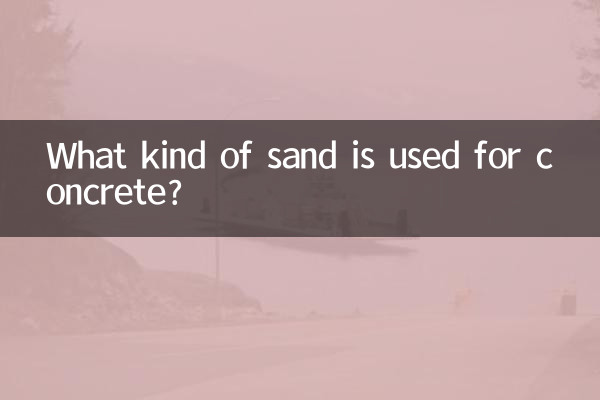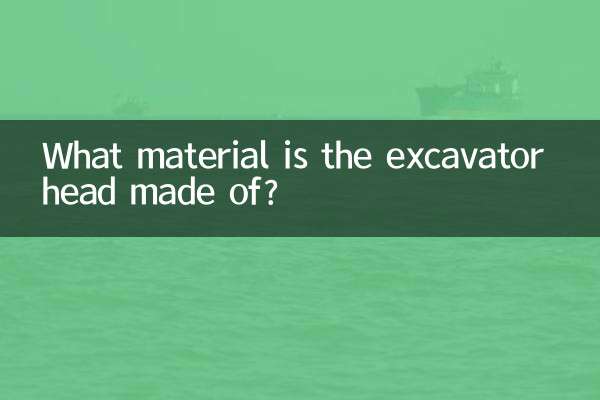What kind of sand is used for concrete: comprehensive analysis and hot trends
In construction projects, the quality of concrete directly affects the strength and durability of the structure, and as an important component of concrete, the selection of sand is crucial. This article will combine hot topics and data from the entire Internet in the past 10 days to provide you with a detailed analysis of the types, standards and latest industry trends of sand used in concrete.
1. Main types of sand for concrete

Depending on its source and characteristics, sand can be divided into the following categories:
| sand type | Features | Applicable scenarios |
|---|---|---|
| natural river sand | The particles are round, low in mud content and high in strength. | High strength concrete, bridge engineering |
| Machine-made sand | Sharp edges and corners, controllable gradation, low cost | Ordinary concrete, municipal engineering |
| sea sand | Rich resources need to be diluted | Coastal areas (need to be handled strictly) |
| Recycled sand | Eco-friendly but less strong | Low-strength concrete, roadbed filling |
2. Key indicators for sand selection
According to national standards (GB/T 14684-2022), sand for concrete needs to meet the following technical requirements:
| index | Standard value | Detection method |
|---|---|---|
| Fineness modulus | 2.3-3.0 (medium sand) | Sieving method |
| Mud content | ≤3.0% (concrete above C30) | water washing method |
| Mud content | ≤1.0% | water washing method |
| Chloride ion content | ≤0.02% (reinforced concrete) | chemical titration |
3. Recent industry hot spots and trends (data in the past 10 days)
1.The application volume of machine-made sand continues to grow: According to statistics, the market share of manufactured sand has reached 65% in 2023, an increase of 12% from last year, mainly due to the promotion of environmental protection policies and technological upgrades.
2.Breakthrough in sea sand desalination technology: The new electrodialysis technology developed by a scientific research team can increase the chloride ion removal rate to 99.5%, triggering widespread discussion in the industry.
3.Recycled sand standards are improved: The Ministry of Housing and Urban-Rural Development’s newly released "Technical Regulations for the Application of Construction Waste Recycled Aggregate" will be implemented next year to promote the application of recycled sand in concrete below C20.
| hot topics | Search index (daily average) | Main discussion platform |
|---|---|---|
| Machine-made sand production process | 18,500 | Zhihu, Bilibili |
| Sand gradation optimization | 9,200 | Academic forum, WeChat public account |
| Special concrete sand | 6,800 | Industry exhibitions, LinkedIn |
4. Suggestions on sand selection for concrete with different strengths
| concrete strength grade | Recommended sand types | Things to note |
|---|---|---|
| C15-C25 | Machine-made sand/recycled sand | Control mud content ≤5% |
| C30-C50 | Natural river sand/high-quality machine-made sand | Fineness modulus 2.6-2.9 |
| C50 and above | Selected river sand | Alkaline activity testing is required |
5. Frequently Asked Questions
Q: How to identify inferior sand?
A: It can be initially judged through the three-step method of "looking (uneven color), pinching (caking), and soaking (water is turbid)". It is recommended to send it to a professional testing agency.
Q: What should I do if the sand is too fine?
A: 30%-40% coarse sand can be added to adjust the gradation, or the sand rate can be reduced by 2%-3%, and the amount of cement can be increased at the same time.
Q: What impact does the latest policy have on sand prices?
A: After the implementation of new sand mining regulations in the Yangtze River Basin, the price of river sand increased by 8% month-on-month. It is recommended to pay attention to the alternatives of manufactured sand.
Conclusion: With the advancement of technology and the improvement of environmental protection requirements, concrete sand is developing in the direction of diversification and standardization. It is recommended that engineering units scientifically select sand types based on specific needs, combined with the latest standards and industry trends, to ensure the quality of concrete projects.

check the details

check the details